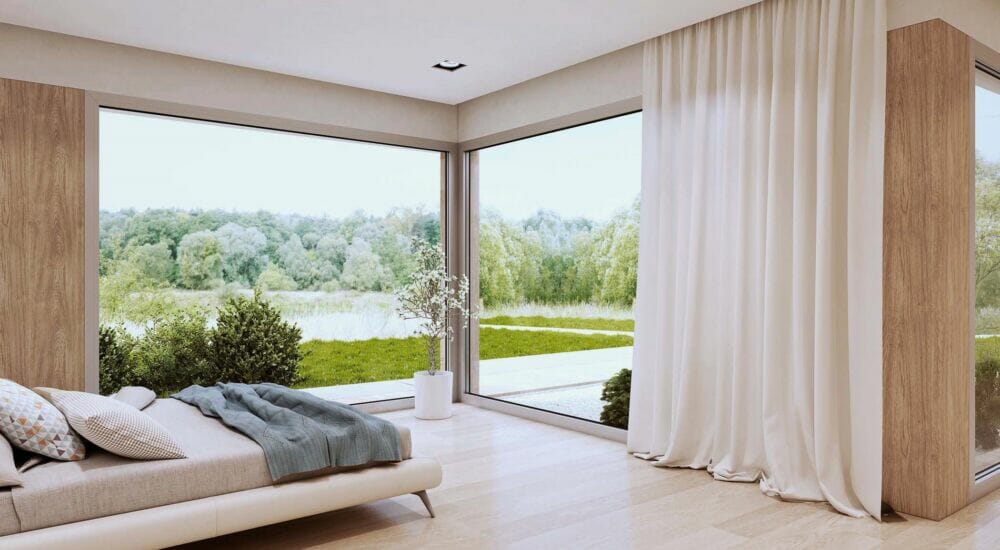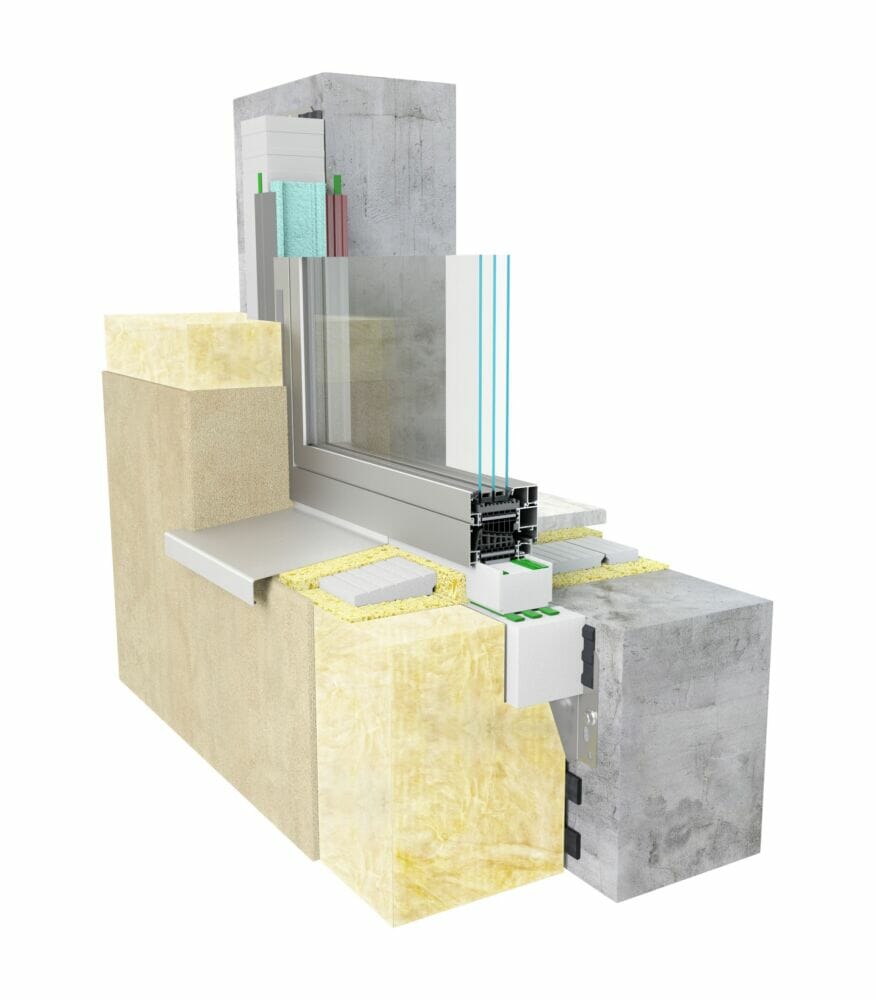
By Wojciech Brozyna – MD of Aluprof UK
Net Zero Carbon Homes by 2050, a step too far? Well it certainly is a challenge for the Construction Industry and home improvement, but it is possible to achieve? Let’s first look at some of today’s facts: 27% of our carbon emissions in the UK comes from heating our buildings, with 18% coming from our domestic building stock. 80% of our homes that will be needed in 2050 have already been built and we are still building homes today that are not in line with net zero. So what do we have to do?
Currently our homes range from 90 to 170 kWh/m2 energy usage per year, in 2050 we need to have our homes between 40 to 60 kWh/m2 per year. We will achieve this by taking a whole building approach, increasing thermal insulation whilst reducing air permeability and cold bridging. Obviously we will need to stop using fossil fuels such as gas as soon as practicable and move to heat pumps as the most accessible technology at the moment. Currently over 85% of homes in the UK have gas boilers. A gradual phase out of gas boilers and an increase in heat pump installations will allow the gradual increases required in the electricity grid, which continues to be decarbonised to use more renewable energy.
To achieve our net zero target, our well insulated homes will require less zero carbon energy to run and it is only then when we can claim a ‘Net Zero Carbon’ balance for our building stock.

As for windows and doors, it is anticipated that these should achieve 0.8 W/m2.K by 2025. Couple these lower values with increased insulation in walls, roof and floor and we will see space heating demand decrease to 25 to 50 kWh/m2/yr. Whilst it is challenging to increase insulation in the building fabric, either internally or externally, one issue that our industry must tackle is that of cold bridging, especially around the installed windows and doors. With a high performance window or door frame typically 70mm in width, how do we ensure that the structure supporting the window increases in insulation from the frame U value to the full thickness of the wall which will typically be 0.15 W/m2.K without dipping and creating a cold bridge? Currently many replacement window installations ignore the need to continue the thermal insulation within the window to link into the surrounding structures insulation. Ignoring these thermal requirements around the window reveal can heavily reduce the purported gains of installing a high performance window or door.
Basically no one element of the building structure can be looked at in isolation. High insulation building fabric goes hand in hand with high performance windows and doors, with the caveat of careful detailing around window and door openings. The ‘fabric first’ approach is key to achieving our net zero target, indeed, just opting for home insulation now will heavily reduce current carbon emissions by using less fossil fuels. Adding to a well insulated and airtight home, the installation of heat pumps, MVHR (Mechanical Ventilation with Heat Recovery) and photovoltaic panels, will ensure we reach our goal.


Who will pay? Over the last few decades we have strived as homeowners to improve our properties, especially by installing new windows and doors, I believe we will continue to improve our properties as part of our goal to have economic and comfortable places to live in.
The landscape for the ‘home improvement’ market will likely change in the future, replacement windows and doors rated at 0.8 W/m2.K will be installed hand in hand with external or internal insulation to reach the future homes standard for walls of 0.15 W/m2.K. Furthermore, these improvements will likely go hand in hand with MVHR installations meaning that we will not need trickle vents through windows together, possibly with less opening vents in windows. What seems certain is that over the next couple of decades the home improvement market will become very buoyant as these opportunities present themselves to a well established ‘trade’ supply chain.
Here at Aluprof UK we already have a range of very high insulation systems and we have new high performance products waiting in the wings. Our technical teams are well versed in offering assistance to architects to help detail and reduce thermal bridging on new and refurbished building envelopes. Traditionally, Aluprof UK offer commercial systems to the UK & Ireland markets, but we are now experiencing rapid growth in supplying the home improvement market.
Since setting up the Aluprof Office at the Business Design Centre in London, the company has rapidly grown their specification influence in the UK with their high-performance architectural aluminium systems. Further expansion of the company’s headquarters in Altrincham now provides specifiers with meeting facilities and an extensive showroom of commercial systems to view. With overseas growth across Europe spreading into the Middle East and firm roots already in the East of the USA, the company has become a global player in facade supply.
Further information is available on the company’s website at aluprof.co.uk or direct from their UK head office in Altrincham on 0161 941 4005.

